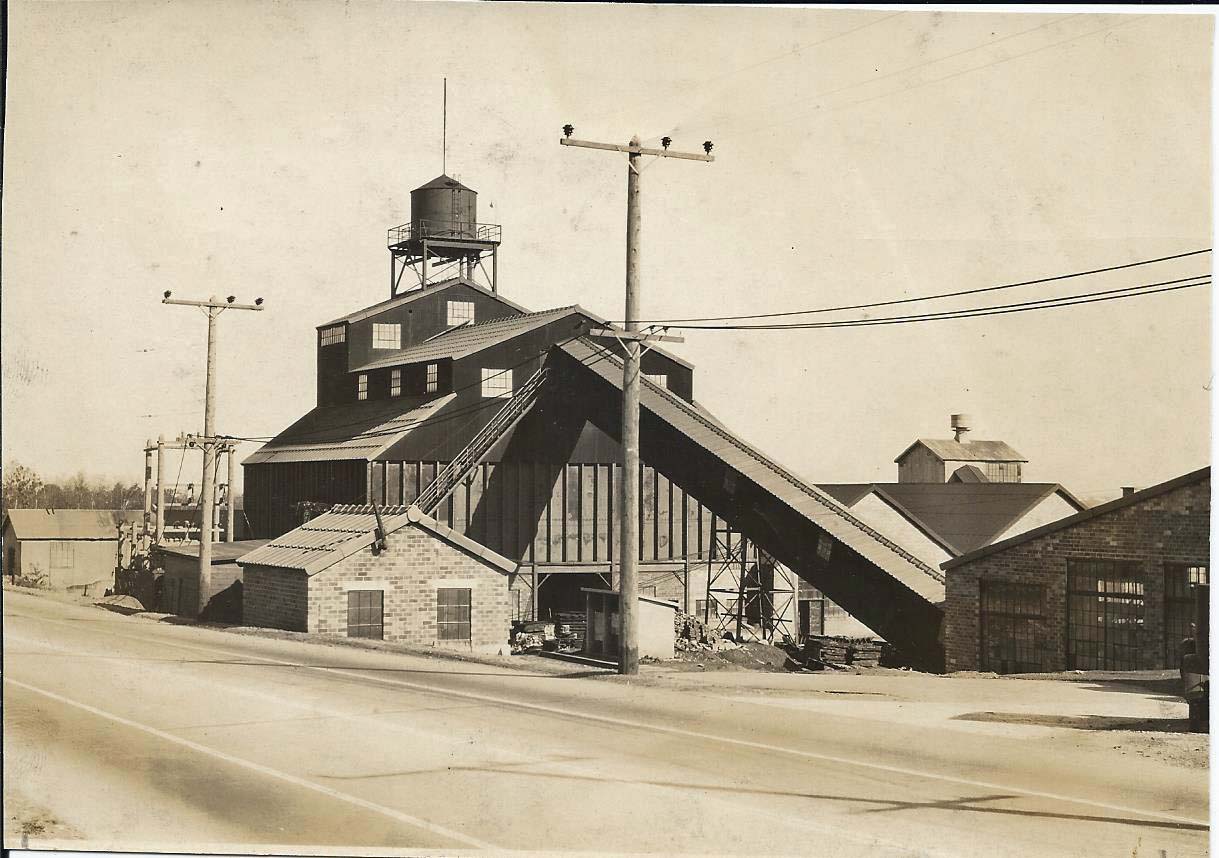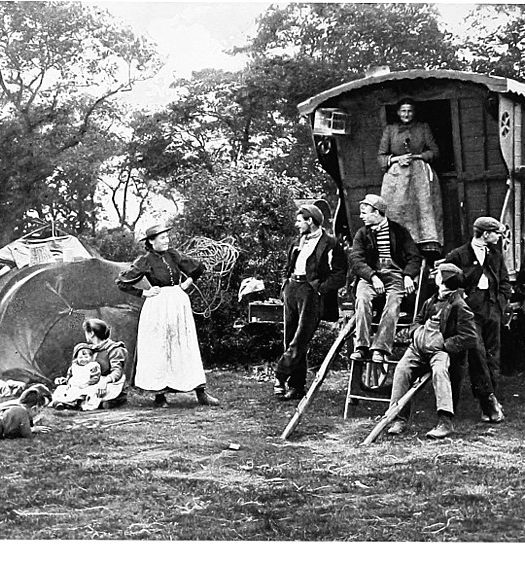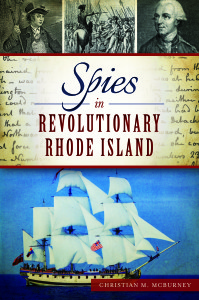I wonder if the strollers and shoppers at Garden City Center are aware that beneath those trendy shops and eateries there was once an active coal mine. Granted, the coal was of such poor quality it was the subject of a joke that took a dig at the coal and the state’s reputation for corrupt politics: it was said that on Judgement Day the wicked should take refuge here because Rhode Island would be the last place to burn.
Writing in Engineering Magazine in 1915, one author dismissed the coal and graphite in Cranston with this scathing report: “Rhode Island coal has taken its place with gold mines, oil wells and rubber plantations as among the most effective agencies to permanently separate feeble-minded speculators from their funds.” Harsh words indeed.
During World War II, when there was a desperate need for fuel, the New Haven Railroad Company gave Cranston coal a trial run on a freight train traveling between Fall River and Lowell, a distance of 78 miles. The test was not successful; the coal did not burn in the engine firebox and the residue clogged up the equipment, causing the engines to lose steam. R.R. Tweedy, the locomotive fireman, had to take a convoluted series of steps to get the train back to Fall River and his critique of the coal put an end to the New Haven Railroad’s interest. “You’d have a roaring hot fire going, and you’d put that stuff in and it would just lay there like a blanket,” complained fireman Tweedy.
So what was the problem with Rhode Island’s coal? The anthracite coal produced in the state (there were other mines in Cumberland and Portsmouth) burned very hot but was difficult to ignite; one geologist described it as “fireproof.” It also had a high moisture, ash and chlorine content. Its low heating value produced only 47% to 69% of the heat that could be obtained from other types of coal. Its best use was for smelting ores, though over the years it was sold for home heating and industrial steam power to foundries like Mt. Hope Iron Works and Hicks Boiler Works.
Nevertheless, for one hundred years optimistic investors tried to find markets for the hard coal and graphite under the land off Sockanossett Road. They were attracted by what must have seemed like obvious advantages. The coalfield was near large manufacturing industries and a dense population center. Its location near shipping ports would have been a huge asset given the high cost of shipping coal. And it was close to other gritty cities—Fall River, Taunton, New Bedford, Brockton and Worcester—all large consumers of coal for industrial use. But according to a government inspector writing in a 1913 report, any attempt to burn Cranston coal in an ordinary furnace without special treatment “was doomed to disappointment.”
Despite the difficulties, a number of companies mined the now-suburban coalfield. When Joseph A. Budlong bought the William Harris estate on Sockanosset Hill in the 1860s he expected to farm the land. When he found coal dust in the soil, his J.A. Budlong and Son company, which operated a large rose nursery (the source of the name Garden City) used small lumps of coal in its greenhouse. While they gave off more heat than Pennsylvania soft coal it was difficult to ignite and “clinkered badly.” Clinkers are the stony residue from burned coal.
In 1866 the Pocasset Coal and Iron Company opened the Cranston mine and two years later shipped 3,600 tons to Providence, where, to compete effectively, it was sold at a lower price than Pennsylvania anthracite. In 1885 the New York Carbon Iron Company of Pittsburg opened a shaft 75 feet deep with five rooms at the bottom of the shaft. Two years later it employed thirty men and shipped from 250 to 350 tons of coal a week to Pittsburgh.
The New York Carbon Iron Company closed in 1887 and for the next sixteen years seven companies tried to extract a commercially successful product with little success. In 1913 Graphite Mines Corporation began digging but bad luck struck again when a fire in January 1922 destroyed the buildings and machinery. The $135,000 loss included 600 tons of coal and 100 tons of graphite.
Undaunted, Providence Magazine in March of that year quoted “a leading geologist” (unnamed) who claimed that the mine could possibly produce 15,000,000 tons of coal. “All Rhode Island coal is usable and will give satisfactory results if properly burned,” according to this publication put out by the Providence Board of Trade.
In 1927 the Anthracite Super Fuel Company attempted to spin Cranston coal dust into profitable black gold by developing a new product—briquettes for home heating that ignited more easily. The process was tedious. The coal was pulverized and the ash was removed; the resulting dust was mixed with water and oil; and then the concoction was baked and cut into small briquettes. Looking back in 1975 Gladys Brayton reported in her book Other Ways and Other Days that the briquettes were sold at the plant on Reservoir Avenue for $3.50 a ton, mostly for domestic heating.
Harry B. Chase Jr., in a 1987 report titled, “Graphitic Coal Mines of Rhode Island and Massachusetts,” described “the fuss and struggle of getting the stuff burning; the surprise at the short-lived but intense blowtorch-like heat that warped stove and furnace linings, burnt the bottoms out of teakettles and melted grate-bars; the curses that accompanied the breaking up of clinker and the lugging out of mountains of ashes. The only thing right about Cranston coal was the price; the question was whether the price was worth the trouble.”
Working conditions in the 130-foot mine shaft must have been as grueling as in the nearby mills. Water seepage inside the mine created a constant rainfall and sometimes a downpour. The shaft extended for 2,000 feet with two 500 foot spurs leading off the main shaft. These pockets of water had to be controlled or they would fill completely in thirty days and it would take two days to pump them out.
According to Harry B. Chase, it was impossible to handle the grimy coal without getting black from head to foot. The workers washed up with water pumped from the mine, but it was untreated, directly from the pit and so hard that it was difficult to work up a lather.
Even the coal shortages and miners’ strikes of the 1940s did not give Cranston coal a competitive advantage. During the war the Federal government studied the Cranston mine as a source of fuel to help alleviate New England coal shortages. In 1948, three years after the war ended, the Providence Journal reported that the Bureau of Mines judged the local product a low-grade coal with a gloomy future.
In the 1950s the mine worked sporadically one or two days a week; when work stopped the pumps were shut off, then restarted when work resumed. To determine the standing water level a worker would descend carefully, holding on to a rope on the side of the slope like a handrail. He would toss stones ahead of himself down the slope. If he heard a splash he would climb out and the pumps would be turned on again.
Despite its reputation as a non-starter, Cranston coal and graphite continued to seduce optimistic promoters. Writing in the Cranston Herald in June 1952, Harold Murdock Taylor predicted that “what was once called a Cranston curiosity has developed into an important, stable Rhode Island industry—the only one of its kind in New England.”
It was not to be. In March 1959 a cave-in 400 feet along the main shaft killed Lloyd Eddins, a 23-year-old mine worker; another man barely managed to escape the rock fall. That tragedy prompted the state to close the only coal mine in New England, but in any event its productive days were pretty much over. “It was only marginally profitable by that time,” recalls James Hall, director of the Cranston Historical Society. “People started switching to oil.”
In addition, by the late 1950s Garden City was well on its way to becoming one of the first planned communities in the United States, through the foresight of Nazarene Melocarro, an Italian immigrant who purchased 500 acres of land in the bowl-shaped valley. The development included single family homes and apartments on winding streets, offices, a school and the attractive and hugely successful Garden City Center mall—all a vast improvement on that messy coal mine. The Outlet Company, Rhode Island’s premier department store, built its first suburban branch store where Pottery Barn and J. Crew are today. Newport Creamery is located where the mine’s rickety-looking tower and conveyer belt once dominated Reservoir Avenue.
The Cranston mine was largely forgotten until June 2001 when a hole six feet in diameter and 40 to 60 feet deep opened up in the parking lot in front of what was then a Borders bookstore (LA Fitness and a Container Store are the current tenants). The collapse was caused by heavy equipment being used for a repaving job. The owners of the mall must have breathed a huge sigh of relief when a rough-drawn old map of the mine showed that most of shafts and tunnels were under the parking lots, not the stores.
Perhaps our state was lucky to have an inferior coal product. West Virginia and eastern Kentucky, where coal mining was a major employer, have been devastated by the collapse of the industry and environmental damage. Rhode Island never had a chance to become economically dependent on coal mining.
So how much coal and graphite was taken from the Cranston mine in 102 years of operation? In his history of graphitic coal mines in Rhode Island, Harry B. Chase Jr. estimated that approximately 155,000 short tons (a short ton is 2,000 pounds) of coal or natural carbon were mined in the open pit and below ground in this unlikely spot, now a thriving upscale mall.
[Banner Image: The Cranston Coal Mine, circa 1950 (Cranston Historical Society)]Sources:
“Anthracite Fields of Rhode Island,” New England Magazine, Volume XLIII (September 1910-February 1910)
George H. Ashley, Rhode Island Coal, United States Geological Survey Bulletin 615 (1915)
“Echoes of Cranston,” The Cranston Herald, June 5, 1952
Engineering Magazine (October 1915)
Gladys Brayton, Other Ways and Other Days (1975)
Harry B. Chase, Graphic Coal Mines in Rhode Island and Massachusetts (1987)
Sandra Mozer and Thomas Worthington, Cranston Revisited (2014)
And assistance from James Hall of the Cranston Historical Society and the research staffs of the Providence Public Library and the Cranston Public Library



























